Top Tier CPU Air Coolers Q3 2015: 9-Way Roundup Review
by E. Fylladitakis on July 6, 2015 8:00 AM ESTThe Cryorig R1 Ultimate
Cryorig is a company that popped literally out of nowhere in 2013. They claim to be a company founded by experts with previous experience at other well-known companies, who banded together to both make a name for themselves and to offer "the best of all worlds". The R1 Ultimate that we have here today is the largest, most powerful cooler that they currently manufacture.
We received the R1 Ultimate well packed in a large cubic cardboard box. Everything inside the box is well packed and the bundle is well presented. Cryorig supplies the necessary hardware for the installation of the cooler, a tube of quality thermal grease and a long shank L screwdriver tool. The screwdriver tool is necessary for the installation of the cooler, unless if there is a >170 mm shank Philips PH2 screwdriver available. They also provide a third set of wire clips, for the installation of a third cooling fan.
The Cryorig R1 Ultimate is a very large dual tower cooler. Plastic frames partially cover each tower and are used as supports for the two 140 mm cooling fans. The fans are preinstalled and removing them is not necessary for the installation of the cooler. Each of the two towers has two series of fins. The silver front half of each tower consists of 42 fins, the black rear half of 53 fins. The company claims that by reducing the spacing halfway across each tower, they can accelerate the air exhaust, forcing the hot air to exit the tower faster. It is a rather peculiar approach, as a uniform gap across the entire tower could achieve the same air backpressure/speed without the extra turbulence and noise that the transition will cause. Perhaps Cryorig's research showed that this approach somehow improves thermal performance, by either thinning the boundary layer or simply through higher turbulence flow.
No strange shapes or patterns here - the front of the towers is entirely straight, with Cryorig apparently thinking that trying to improve anything by shaping the intake side of the fins is a waste of resources. The rear of the fins forms a simple geometric pattern, not just to improve the aesthetics of the cooler but also to provide insertion points for the provided screwdriver, which needs to be inserted in the gaps between the center fan and the fins for the installation of the cooler.
Cryorig is using two 140 mm fans, rebranded to their own company logo. They appear to be the same as the XF140 fans that the company retails as well. Aside from the "high precision low noise" bearing that the specifications vaguely describe, not much can be found about the fans, other than that they have a maximum speed of 1300 RPM. According to the specifications of the R1 Ultimate, they are also rated at 23 dB(A). This however is a little misleading, as this is the rating of a single fan in standard test conditions (unrestricted) within an anechoic chamber, not of two fans installed on the cooler itself.
The copper base and heatpipes of the R1 Ultimate have been nickel plated to prevent oxidization, a common upgrade for high-end products. The contact surface is very smooth but not polished down to a perfect mirror finish. In order to save a little room and install a seventh heatpipe, Cryorig placed the seven heatpipes in a slight convex formation.


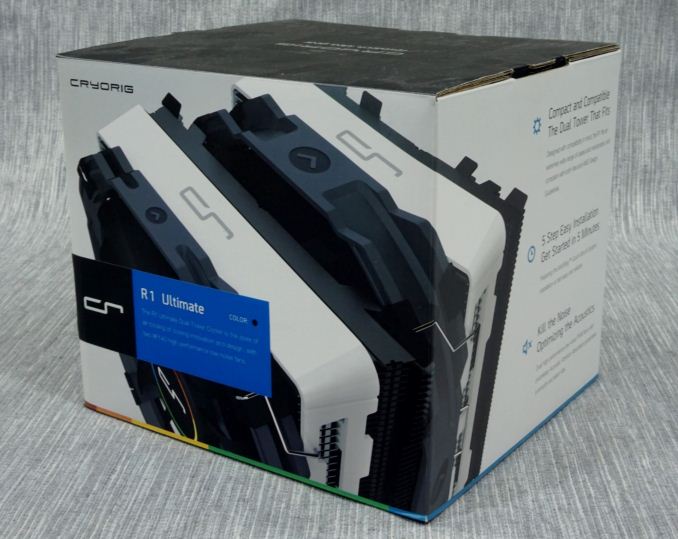
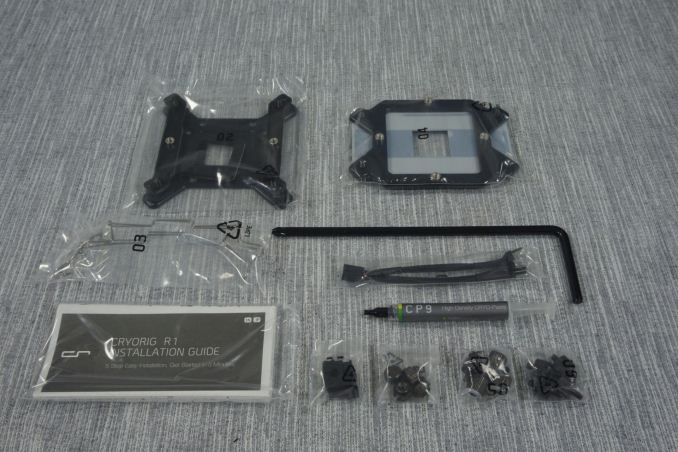
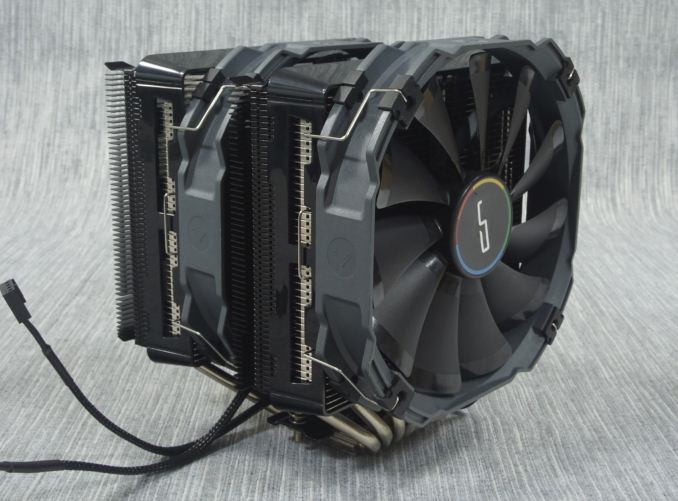
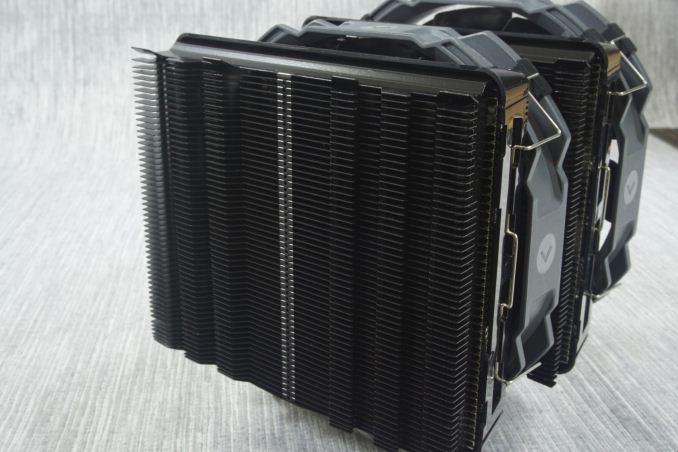
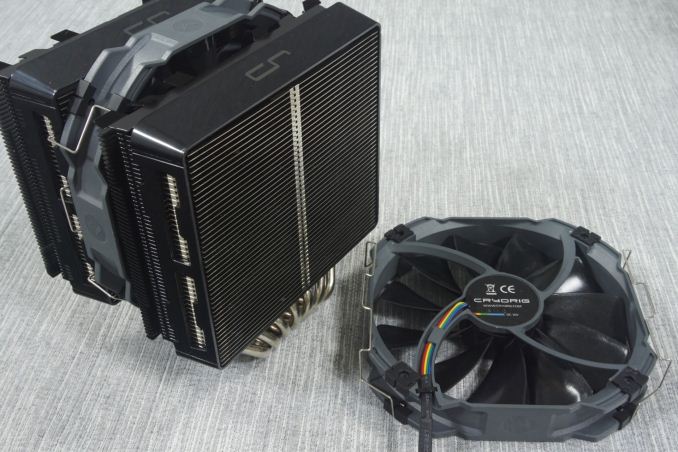
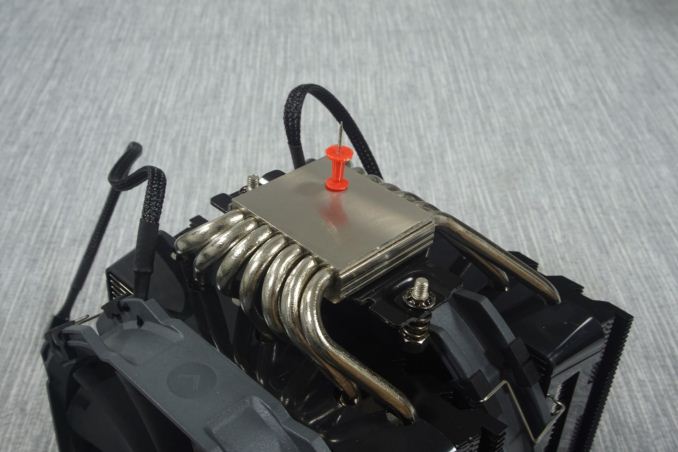








135 Comments
View All Comments
kraznal - Thursday, July 16, 2015 - link
LOL - "Liquid-based cooling solutions are becoming easier to install and AIO kits generally are hassle-free, yet they are still not favored by the majority of the users. Their space requirements, increased complexity and price hold most people to simple air-based cooling solutions."so they become easier to install, hassle-free but somehow managed to keep their complexity? what are talking about??? :)
anyway, I am sure you know this and you just overlooked this fact to support your own story, liquid cooling sets are NOT more expensive (Corsair H50 costs $60 shipped), are NOT bigger (H50 compared to any of the air coolers here for example), and are NOT complex (whatever you mean by that), or even the noise factor where air coolers need to run on higher RPMs to achieve same cooling effectiveness as liquid coolers - simply there is no comparison between liquid solution and air solution. Cheap Corsair H50 is far superior in every way than those colossal monstrosities you are reviewing here now. Smart user would never chose an air cooler simply because it doesn't make sense to chose an old and less effective idea.
Therefore please do not spread bullshit just so you can cash a check for an article.
rleigh - Saturday, July 25, 2015 - link
Liquid cooling doesn't always work well. I got a Corsair H60 to put in a Corsair Obsidian case with an ASUS Sabertooth R2.0 mainboard and an AMD FX8350 processor. It worked brilliantly with CPU temperature at ~35C under load. Unfortuately, the layout of the case and lack of airflow around the CPU heatsink lead to the VRMs/MOSFETS around the CPU reaching temperatures of over 85C, no matter how I arranged the case fans. I replaced it with a Noctua cooler similar to this one which also kept the CPU nice and cool, but with the side effect of the large 14mm fans producing sufficient airflow onto the mainboard to eliminate the dead space which caused overheating.This isn't to say that closed loop coolers are bad; their performance can be very good. But they aren't compatible with every case/mainboard.
kraznal - Wednesday, August 5, 2015 - link
First: it's been almost a month - E. Fylladitakis - must be on vacations since he has yet to reply to my comments.Second: rleigh - very sorry to hear that you had to install additional cooling for your motherboard. It is best to keep high air flow inside the case, if you didn't provide that then no wonder you had an overheating problem.
Cvengr - Friday, December 25, 2015 - link
http://serverfault.com/questions/263931/why-datace...Here's an interesting link regarding the use of water cooling in data centers (limited to air cooling). Primary issue is safety.
alexbagi - Monday, March 7, 2016 - link
Good picks. I'd also suggest looking at http://www.144hzmonitors.com/cpu-cooler-buyers-gui... for guidance.I am going with the 110i myself, as I need water cooling.